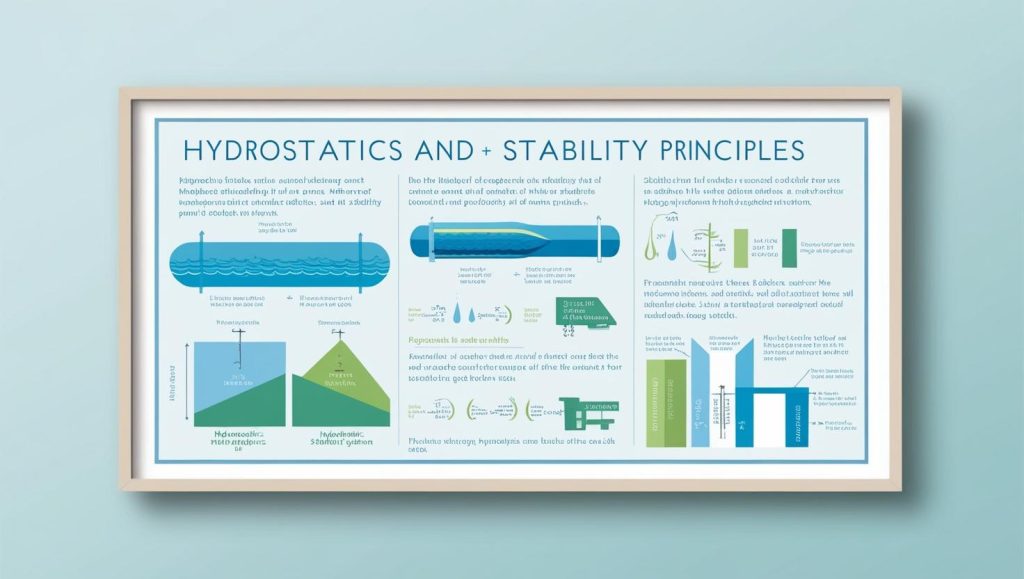Introduction
Hydrostatics and stability are crucial concepts in marine engineering, naval architecture, and fluid mechanics. These principles determine the buoyancy, equilibrium, and overall stability of floating and submerged bodies. For students, mastering these topics is essential to designing and evaluating vessels, offshore structures, and underwater vehicles. This blog provides detailed Hydrostatics And Stability homework help, ensuring students understand key principles, formulas, and real-world applications.
Understanding Hydrostatics And Stability
What Is Hydrostatics?
Hydrostatics is the study of fluids at rest and the forces they exert on surfaces. It plays a vital role in understanding buoyancy and pressure distribution in various engineering applications.

Key Principles of Hydrostatics
- Pascal’s Law – Pressure applied to a confined fluid is transmitted equally in all directions.
- Archimedes’ Principle – A body submerged in a fluid experiences an upward buoyant force equal to the weight of the displaced fluid.
- Hydrostatic Pressure – The pressure at a certain depth in a fluid increases due to the weight of the fluid above it.
What Is Stability in Marine Engineering?
Stability determines whether a vessel remains upright and returns to its equilibrium position after being disturbed. Stability analysis ensures safety in ship design and offshore structures.
Types of Stability
- Static Stability – The vessel’s ability to return to an upright position after being tilted.
- Dynamic Stability – The vessel’s behavior in response to waves and external forces over time.
- Transverse Stability – The resistance to rolling side to side.
- Longitudinal Stability – The resistance to pitching forward and backward.
Common Challenges in Hydrostatics And Stability Homework
1. Understanding Buoyancy and Equilibrium Equations
Students often struggle with applying Archimedes’ Principle and calculating stability factors.
2. Complex Mathematical Calculations
Assignments may require solving equations related to hydrostatic forces, metacentric height, and righting moments.
3. Practical Application of Theories
Students must analyze real-world vessel stability cases and apply theoretical concepts to practical problems.
4. Using Computational Tools
Hydrostatics problems often require simulation software such as AutoHydro, ANSYS AQWA, and Maxsurf Stability to model vessel stability.
Tips for Completing Hydrostatics And Stability Assignments
1. Use Credible Sources
Refer to authoritative sources such as the International Maritime Organization (IMO), American Bureau of Shipping (ABS), and Royal Institution of Naval Architects (RINA) for industry standards and guidelines.
2. Master Core Formulas
Understanding key equations such as:
- Buoyancy Force (F_b) = ρ × V × g
- Metacentric Height (GM) = KM – KG
- Righting Moment (RM) = GZ × Displacement
3. Utilize Simulation Software
Learning tools like ShipFlow, Wamit, and ANSYS Fluent assist in modeling hydrostatic forces and vessel stability.
4. Seek Professional Assistance
Students struggling with coursework can benefit from Hydrostatics And Stability homework help through tutoring services and academic writing support.
Recommended Online Resources for Homework Help
- International Maritime Organization (IMO) – Marine Safety Guidelines – www.imo.org
- American Bureau of Shipping (ABS) – Ship Stability Rules – www.eagle.org
- Royal Institution of Naval Architects (RINA) – Engineering Resources – www.rina.org.uk
- MIT OpenCourseWare – Naval Architecture Courses – ocw.mit.edu
The Importance of Professional Assistance
Many students benefit from expert tutoring services that provide guidance on vessel hydrostatics, equilibrium analysis, and stability calculations. Platforms like Chegg, Course Hero, and TutorMe offer specialized support for hydrostatics and stability assignments.
Conclusion
Excelling in hydrostatics and stability requires a strong understanding of fluid mechanics, ship stability calculations, and real-world applications. Students facing challenges with their coursework can enhance their learning experience by utilizing Hydrostatics And Stability homework help, accessing expert guidance, and using credible resources.


